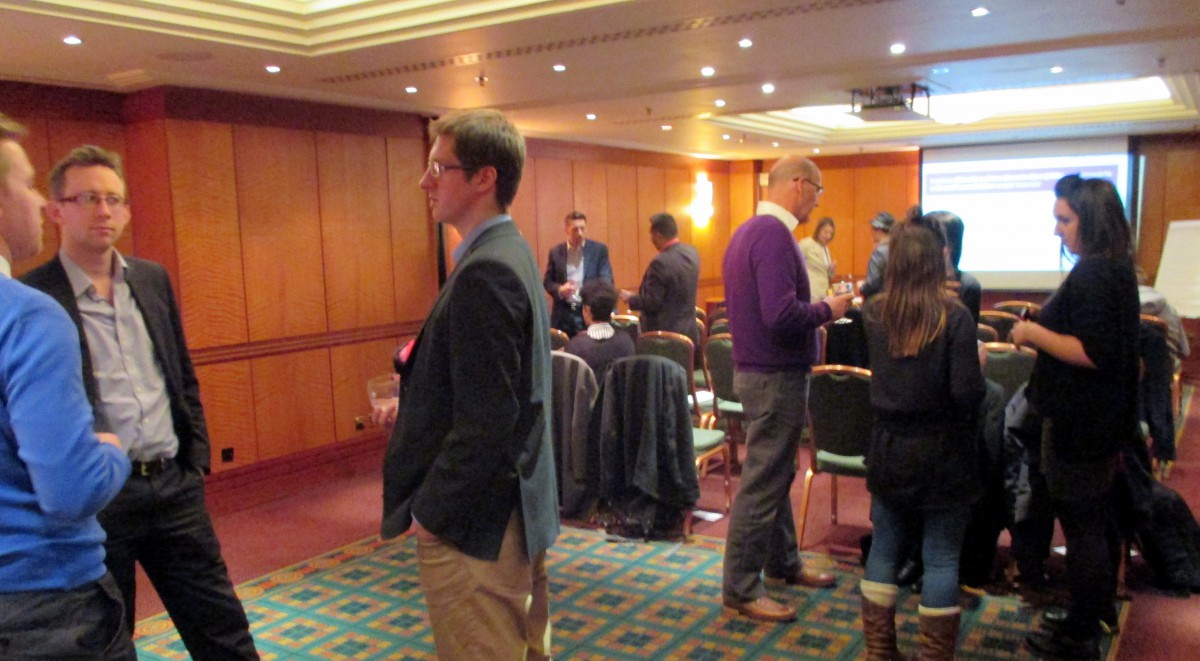Loving the pitch was the title of Gareth Dimelow’s talk at the #EventPlannersTalk LIVE event on 25th July at EEF Venues’ Broadway House. Formerly the Executive Director of Strategy and Planning at George P. Johnson, Gareth is the founder of LIFTd, a new strategic communications consultancy. Building on almost twenty years of experience, working with many of the world’s most recognisable brands, Gareth is now helping clients to engage their employees, unlock the DNA of their business, and build brands through the collaborative storytelling process. Used to bridging the gap between knowledge and creative expression, Gareth has developed insights and robust communication platform for a wide variety of clients, ranging from BBC, Samsung and GSK, to IBM, Toyota and Zumba. Based on his years long experience and expertise, he shared with us the most common problems and challenges in pitching and what effective pitching is.

His talk kicked off with presenting probably the most common challenge with pitching – having negative association and suspicion because there is pressure to give the best without getting anything in return. But, in reality, everyone has good chance at pitching if they just think about what effective pitching looks like when following these aspects:
Firstly, agencies should banish the thinking that they are invited to pitch just to “give ideas” and “make up the numbers”. Instead, it’s about giving yourself the best possible chance to get the work, so must be positive about every opportunity that comes along.
At the same time, be cautious of the “toxic pitch”. The warning signs are when client wants you to create the whole event but not making himself available for a conversation or consultation and not willing to get to know you first.
When pitching, you must allocate a leader. Leader is the one who gives direction, guidance, creates internal briefs to create something actionable. The role of the leader is to build the team, so if you are chosen to be on the pitch it’s an opportunity to shine and stand out.
Another interesting concept he presented is called “mirroring and matching”. That means that clients choose agencies that “understand the dynamics of project owners” and have the same structure as the client himself. For example, if client has marketing and communication devisions, have similar structure with marketing and communication sub-teams within your pitching team. This gets clients focus and when they have questions they know whom to ask within the team.
There are two types of briefs; one is a “shopping list”: clients want to know that you can deliver for certain cost. The other type is when clients want you to help them solve a problem, problem they might not even know at the time. Learn to look for a problem and propose to solve it, figure out what the problem is.
The things you should look for are:
How – how to address the problem, sometimes articulate that there is a problem in the first instance.
Why – why you are going to do it and why you’ve made this decision. Clients coming to you for your expertise, not your delivery ability.
What – what will the outcome be and what does success look like? How do you measure the event? The client must say what success looks like so the agency can help measure it. In a pitch you must propose vision what does success look like. Clients are not looking for capabilities otherwise you wouldn’t have been selected to pitch in the first place. Position yourself as a problem solver.

You can differentiate yourself when you can meet client’s needs when the competitor can’t. Successful pitch must persuade the client to do something.
It’s also important to incorporate storytelling in your pitch. Brands always say that they tell stories – all use it, but when stuff stop being content and become a story? To create a good story there must me the 3 Ms: it must be meaningful, memorable and moving. It must resonate with people, have a hook, make you feel something and create emotions to remember.
Talking about the ideal length of a pitch, Gareth said it should be as long as it has to be and as short as it can be.
Last but not least, try to avoid clichés because it’s when the audience starts switching off. If your story is compelling, you won’t need any power point for your pitch as you’ll send follow up documents with the script. All you need to memorise is the first and last lines of your pitch.
To be honest with you I was always horrified about pitching and Gareth’s presentation gave me confidence and guidance how to do better and embrace every opportunity that comes my way! What’s your experience with pitching?




No Comments